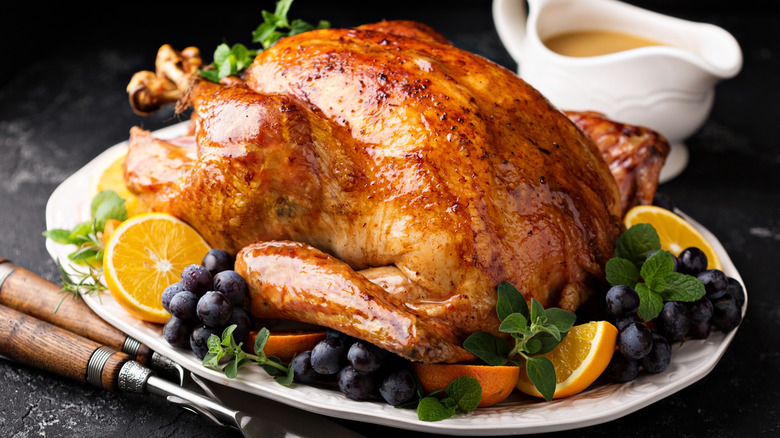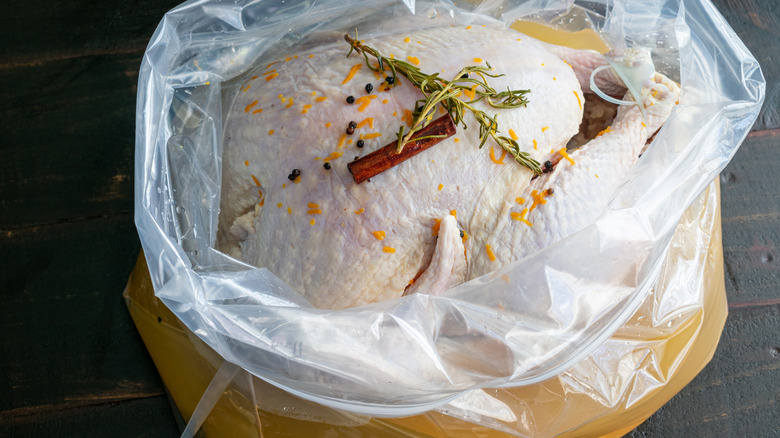What Is Brining Actually And Why Is It Important?
In the weeks leading up to Thanksgiving each year, the word "brining" tends to be thrown around by foodies everywhere — particularly among those who are getting ready to roast the turkey for the season's festive meal. For home cooks who are already familiar with what brining is and why it's important, the process tends to be a given. In which case, the only real question is whether to go through all the trouble of using a wet brine versus a dry brine. A dry brine is, after all, so much easier to accomplish in the average home kitchen than a wet brine.
Elsewhere, those who are more accustomed to slicing open the Butterball wrapper and sliding that baby into the oven may be wondering what brining even is. According to Carol Miller of the Butterball Turkey Talk Line, what they may not realize is that many commercially available turkeys — including Butterballs — have already been brined, more or less (via NBC News). So, then what exactly is brining? And why does it command so much attention around Turkey Day among home cooks and celebrity chefs, including the likes of Alton Brown?
Brining works by osmosis!
At its most basic, brining refers to is the process of soaking meat — any meat, not just turkey — in a solution comprised of salt and a liquid (usually water) (via The New York Times). Although many people flavor their brines with other seasonings that complement the meat, it's really the salt that does the essential work of the brine. And what is that work? To hydrate the meat, making it tender and juicy.
How that works is by osmosis, which is the process by which water or other solvents diffuse spontaneously between two adjacent solutions (via Biology Online). As scientists have learned by observing the process, osmosis appears to be an attempt to equalize the relative concentrations of solids in the two solutions. Since meat contains relatively little water as compared to salt, when we immerse it in a solution made up of lots of water and little salt, the process of osmosis moves the water into the meat to align its salt content with that of the water. The result is a well-hydrated, pleasantly salted bird. "Brined meats end up gaining 10 percent or more of their original weight in water and salt," according to food science expert Harold McGee (via The New York Times). As a result, even when cooked to "well-done," the meat will still seem juicy. In addition, the salt weakens the protein's structure, offering a more tender bite.

